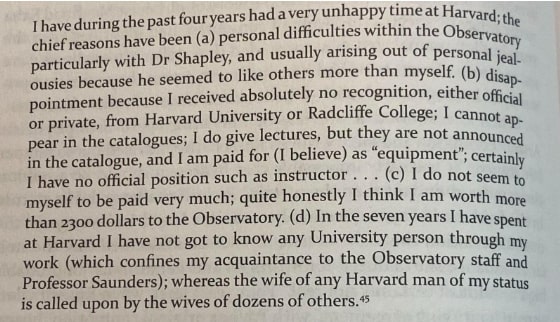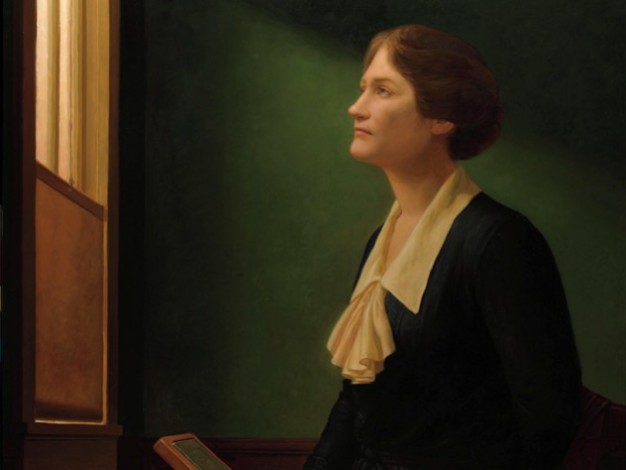Science from the Sidelines
“Portrait of Cecilia Payne Gaposchkin, Harvard University Portrait Collection, Gift of Dudley and Georgene Herschbach.”
“Behind every great man stands an even greater woman,” is a saying that rings painfully true across scientific fields. Behind the groundbreaking discoveries, nobel prizes, and academic acclaim attributed to men over the past centuries stand the great women who were shoved to the periphery of labs and academia, who nevertheless contributed to scientific advancements for which they gained no recognition. Research on gender inequality among professors at The University of Pennsylvania established that discrimination against women increased alongside the prestige of the university and the ranking of the job position. Few women were able to become professors, and scarcely any were able to achieve tenure. Tenure is intended to provide access to job security, resources, intellectual freedom, and academic circles. Without it, women faced obstacles in both conducting and publishing their own research. The story of Cecilia Payne-Gaposchkin (1900-1979; APS 1936), a groundbreaking astronomer who discovered the composition of stars, illuminates these limitations.
Payne-Gaposchkin attended Cambridge University at a time when women were not granted degrees even if they fulfilled the requirements. Once she concluded her studies, she found that her opportunities to work in astronomy were nonexistent in England. In order to continue in her chosen field, she pursued a fellowship at the Harvard Observatory to research star spectra under director Harlow Shapley. Shapley had hired several other women to photograph and catalog stars, but he didn’t allow them to theorize about their findings. However, the terms of Payne-Gaposchkin’s fellowship allowed her to research freely and she discovered that stars are composed almost entirely of hydrogen. This theory ran contrary to the commonly held belief that stars’ atomic composition mirrored Earth’s. Payne-Gaposchkin sent her thesis to Henry Norris Russell, an extremely powerful figure in astronomy who had the ability to make or break careers. He responded that her findings were “almost certainly incorrect,” and instructed her to denounce their validity. She did so. Four years later, Russell independently discovered that Payne-Gaposchkin was right. Though he referenced her briefly in the paper publishing the results, Russell received the credit for the groundbreaking discovery.

Meanwhile, Payne-Gaposchkin’s fellowship ended, and despite her growing international acclaim, the president of Harvard stated that as long as he lived, no woman would be made a professor at his university. As such, her career and work were placed under Shapley’s control. He ended her research on star spectra so she wouldn’t get in the way of her male colleagues. She was moved away from the theoretical, intellectual work that she excelled at and was instead pushed to assume lower, less intellectually stimulating positions. It took 31 years and a new president of the college for Payne-Gaposchkin to become the first woman promoted to full professor at Harvard.
When Gaposchkin had the resources, academic freedom, and respect to properly conduct her own research, she revolutionized her field. The institutional and interpersonal discrimination she faced not impacted only her, but the entirety of astronomy. The relegation of women to the sidelines has been more than a blow to equality, it is a loss for scientific progress.
References
APS, Mildred Cohn Papers, Mss.Ms.Coll.17, Box 17
Moore, Donovan, and Burnell, Susan Jocelyn Bell. What Stars Are Made of: The Life of Cecilia Payne-Gaposchkin. Cambridge, MA: Harvard University Press, 2020.
Payne-Gaposchkin, Cecilia. The Dyer's Hand: An Autobiography. Privately printed, 1979.

